Earlier this year, the producer King Britt picked up his phone and started dialling. He was calling friends and contemporaries to sound them out about an event he was curating in New York as part of MoMA PS1's festival. The night would be billed as Moondance: A Night in the Afro Future, and was designed to display Afrofuturism's contemporary face, featuring lectures and discussions from writers and thinkers, plus live performances.
"I just called them up and said: 'Look, we don't have a big budget, but we have to do this,'" he recalls. "At first they didn't even believe me. They were like: 'Can you really pull this off?'"
But as he made his way through his contact book he quickly found the problem wasn't having to twist people's arms to get them on board, but instead having to explain to people who were left off the bill why he couldn't find room for them.
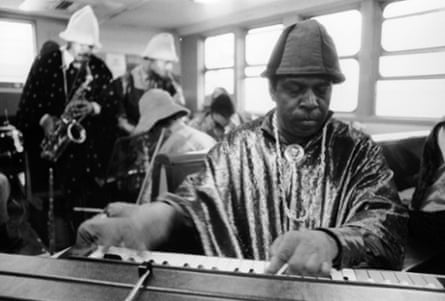
That level of enthusiasm for a concept which hadn't been defined until the mid 90s, gives an insight into how far Afrofuturism has come and how many people now identify with its ideas. First coined by cultural critic Mark Dery in an essay called Black to the Future, Afrofuturism draws together elements of astral jazz, African-American sci-fi and psychedelic hip-hop into an all-encompassing philosophy, imagining alternative visions of tomorrow.
Culturally, Afrofuturism's reach is vast. It encompasses the literature of writers such as Octavia E Butler and Ishmael Reed, films such as John Sayles's The Brother From Another Planet, and the visual art of Jean-Michel Basquiat and Ellen Gallagher. It has been retrospectively applied to the work of musicians ranging from Jimi Hendrix and Sun Ra to Public Enemy and Lee "Scratch" Perry. It has an expansive and pliant musical heritage, which film-maker and Afrofuturist author Ytasha Womack argues stretches all the way back to ancient African griot traditions; she also notes the frequent references to Egyptian astronomy and the pyramids.
She describes Afrofuturism as "the intersection between black culture, technology, liberation and the imagination, with some mysticism thrown in, too. It can be expressed through film; it can be expressed through art, literature and music. It's a way of bridging the future and the past and essentially helping to reimagine the experience of people of colour."
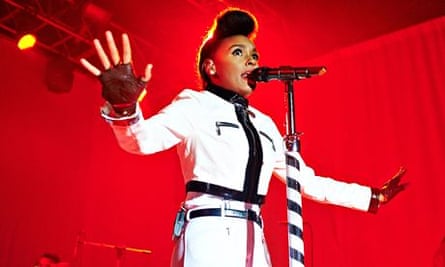
A brief – and in no way definitive – breakdown of Afrofuturism's musical lineage might look something like this. The 50s and 60s were dominated by the free jazz and avant garde work of Sun Ra and his Arkestra, John Coltrane, Miles Davis, Don Cherry and Alice Coltrane, with some psychedelic input from Jimi Hendrix and Love. The 70s and 80s were when George Clinton's Parliament/Funkadelic and Prince sent funk to outer space and dub innovators such as King Tubby and Lee "Scratch" Perry beamed out cosmic signals from Jamaica. The 90s saw a renaissance and reimagining of Afrofuturism in hip-hop (OutKast, Kool Keith's Dr Octagon alias and RZA), neo-soul (Erykah Badu) and techno (specifically Detroit producers such as Drexciya), with all embracing the philosophy and giving it their own distinctive edge.
If you wanted to see a snapshot of what musical Afrofuturism is today, a visit to the Tumblr of LA beat scene stalwart Ras G, who performed at Moondance and whom King Britt calls "this generation's Sun Ra", would give you a good impression. Record sleeves featuring Sun Ra and Alice Coltrane sit interspersed with stills from Spike Lee's Do the Right Thing and an article about the beauty and importance of the African headdress. It's a wonderful mish-mash of African imagery, sci-fi, free jazz and African-American post-civil rights rhetoric.
In King Britt, MoMA PS1 couldn't have found a better curator for Moondance. He's toured with Grammy-award winning hip-hop group Digable Planets, started a record label with acid house mainstay Josh Wink, and used to sell records to Detroit techno artists such as Carl Craig while working as a buyer at Tower. As a child growing up in Philadelphia he was taken to Sun Ra rehearsals by his mother, who was a friend of the group. "I was five and six and saw these brothers in costume playing this really out there music," he recalls. "I was living in a house where my mum was into jazz and my father was really into funk; he also owned a barbershop where I'd hear Herbie Hancock and Miles Davis. All of that, to me, explores and is the foundation of Afrofuturism now."
Britt – who's now focusing on his own solo project Fhloston Paradigm, which takes its name from a mispronunciation of the party planet of Floston Paradise in Luc Besson's camp sci-fi romp The Fifth Element – has become a de facto leader of the new wave of Afrofuturists, acting as a connecter between artists in his home town of Philadelphia (the Roots), New York (Hank Shocklee, Anti-Pop Consortium), Seattle (Shabazz Palaces), Detroit (Carl Craig) and Los Angeles (Ras G, Flying Lotus). For him, events such as Moondance are essential in order for Afrofuturism to legitimise itself and become more than just a cultural curiosity. "I felt that it was very important to do the MoMA PS1 event because being held in an established museum, that's how you get into the history books," he says.
But what we now define as Afrofuturism wasn't ever just about musical exploration, cool costumes or even academic recognition. The ideas and philosophy of Sun Ra, whose centenary is celebrated this year, were also about improving the lives of black people: he started making music before universal suffrage or the civil rights struggle. Just as Marcus Garvey proposed a "Back-To-Africa" movement for descendants of slavery, Sun Ra felt the future for black Americans could be intergalactic. But however far-out that might seem, Britt argues even Sun Ra's most outlandish claims are rooted in the real, everyday struggle black Americans faced.
"When people said the ozone layer is disappearing and it's our fault, then people began to use less gas and looked into electric cars, so it spawned this consciousness," he says. "So I think that's what Sun Ra was trying to achieve. Not so much saying, 'Come with me, I'll save you', but, 'Listen and look at what's around you and we can make this better if you pay attention.' He wanted to raise awareness and consciousness."
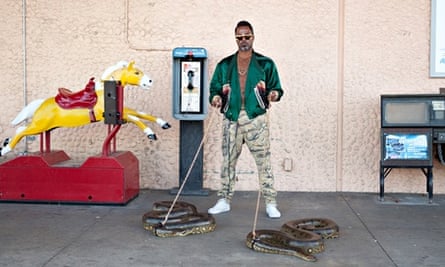
Ishmael Butler of Shabazz Palaces, who along with THEESatisfaction has formed an unlikely Afrofuturist cell in the environs of the Sub Pop label, and who worked alongside King Britt in Digable Planets, also sees Sun Ra's teachings as being rooted in the now.
"I try not to really think of past or future, but to make the most of the instinct that's happening in the moment," he says. "To me that's where individuality lies. I learned and got the notion from Sun Ra and cats like that, for sure. I see these guys, who we call Afrofuturists, to be masters of the now."
That message of self-awareness, free expression and empowerment still exists in modern Afrofuturism, which has produced one artist credited with taking its ideas into the mainstream. "I think the term has gotten its legs because of Janelle Monáe," King Britt says. "She's in the pop world and what she does reaches so many people. So when she used the term in a few interviews it really resonated."
Ytasha Womack sees Monáe's art as being able to transcend racial boundaries, taking Afrofuturism away from being a purely black concept. "I think that's why a lot of people enjoy Janelle Monáe, because she talks about this android, this 'other'. The symbolism is understood," she says. "A lot of people can associate with this concept of otherness for a whole host of reasons, many of which are not racial, so there's a connection there."
That connectivity has also built bridges not just across races and sexuality, but across the Atlantic, too. Although the two current hotbeds of musical Afrofuturism are LA (with the "beat scene" there headed up by Flying Lotus, whose aunt is Alice Coltrane, the second wife of John Coltrane and an important jazz artist in her own right) and Atlanta (which has its own mutations from OutKast, Monáe and Future), UK artists are also drawing on Afrofuturism for inspiration. Throwing Shade's music has been called "cosmic R&B" or "paranormal pop" and fuses ethereal soundscapes with whispered R&B vocals.
"There's a lot of different elements of Afrofuturism that come through in what I do," she says. "I wear a headdress, I have a custom-made dress and wig, but my interpretation of it is probably a lot different to someone with an African-American background. The aesthetic is there but it's a mixture of lots of different ideas."
That cross-fertilisation of ideas has always been central to Afrofuturism and helps to answer a question Dery asked when he first coined the term: "Can a community whose past has been deliberately rubbed out, and whose energies have subsequently been consumed by the search for legible traces of its history, imagine possible futures?" Twenty years on the answer is an unequivocal "yes", and now the question seems to be where their imaginations and mutations will travel next.
Five landmarks in musical Afrofuturism
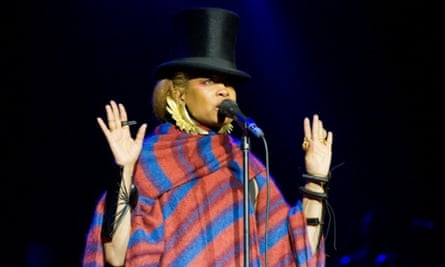
Sun Ra Space Is the Place (1973)
To many this is the definitive Afrofuturism album, without which much of what came after simply would not have happened. On this free jazz touchstone, Sun Ra took his alien metaphor to another level (or another stratosphere?) and immortalised the four-word phrase that has been regurgitated, misquoted and clung to by myriad artists, musicians and thinkers ever since.
Drexciya The Quest (1997)
Drexciya's interpretation of Afrofuturism was perhaps the darkest, with their imagined world of Black Atlantis being a colony for African slaves who had been thrown overboard during their transatlantic voyage. Later work had some lighter touches, but this was dystopian techno that spoke to the dark truth about African Americans' recent history, and envisioned a fantastic sub-aquatic alternative.
Erykah Badu Baduizm (1997)
Badu created Baduizm just as Dery's theories were beginning to take hold and helped create a sound and aesthetic that would open the door for R&B singers who wanted to question not only the value of relationships but their own place in society. As much influenced by free jazz as soul, it's a modern classic.
OutKast Aquemini (1998)
Before their assault on the pop charts OutKast crafted a triptych of albums that helped to reposition southern hip-hop as a forward-thinking, if slightly strange, outlier. Characterising themselves as Atlanta aliens, they followed up the foundation they'd set with Southerplayalisticadillacmuzik and ATLiens. It seems all the more prescient now Andre 3000 is playing Jimi Hendrix in the forthcoming biopic All By My Side.
Flying Lotus 1983 (2006)
An up-to-date version of free jazz or just a load of electronic noodlings that sound like a toddler throwing a keyboard down the stairs? Definitely divisive, the LA beats scene's figurehead certainly leaned on the free jazz philosophy of his aunt Alice Coltrane on his debut LP, but also managed to forge a distinctive blueprint for instrumental hip-hop that has been continued on his Brainfeeder label.
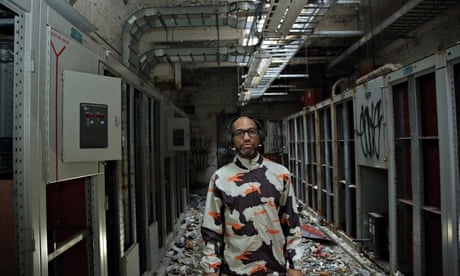

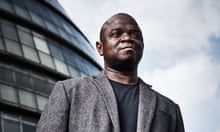

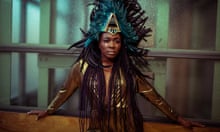
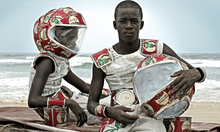




Comments (…)
Sign in or create your Guardian account to join the discussion